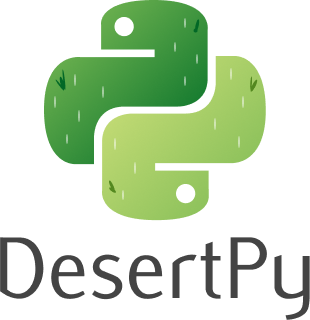Background¶
- Containers
- Kubernetes
Containers¶
- "Single" Lightweight Process (not VM)
- Isolated
- Resource Management
- Resource Access
- Managed Like Cattle not Pets
- Docker, Containerd, CRI-O
Kubernetes¶
Kubernetes is a portable, extensible, open-source platform for managing containerized workloads and services, that facilitates both declarative configuration and automation.
- From What is Kubernetes
Kubernetes¶
- Service discovery and load balancing
- Storage orchestration
- Automated rollouts and rollbacks
- Automatic bin packing (scheduler)
- Self-healing (resource aware scheduling)
- Secret and configuration management
"It's a container orchestration system." - Austin
Additionally, Kubernetes is not a mere orchestration system. In fact, it eliminates the need for orchestration. The technical definition of orchestration is execution of a defined workflow: first do A, then B, then C. In contrast, Kubernetes comprises a set of independent, composable control processes that continuously drive the current state towards the provided desired state. It shouldn’t matter how you get from A to C. Centralized control is also not required. This results in a system that is easier to use and more powerful, robust, resilient, and extensible. - Kubernetes Docs
Setup¶
All of this can be done on a Linux or MacOS desktop if you have the following installed:
- Python/Virtualenv - To build and test the App
- Docker - To build and test the container image with the App
- Minikube - To run a local dev Kuberenetes cluster (runs in VM*)
Python and Kubernetes?¶
- Python Applications can be deployed in Kuberenetes
- Kubernetes Can be managed/controlled by Python
Python Applications can be deployed in Kuberenetes¶
- Make the app
- Write the
Dockerfile - Build the container Image
- Create a Kubernetes
Deployment - Apply the
Deployment.
Make the App¶
!find webapp/
webapp/ webapp/Dockerfile webapp/app webapp/app/main.py webapp/app/static webapp/__pycache__ webapp/__pycache__/app.cpython-37.pyc
The App¶
!head webapp/app/main.py
from starlette.applications import Starlette
from starlette.config import Config
from starlette.responses import PlainTextResponse
from starlette.routing import Route, Mount
from starlette.staticfiles import StaticFiles
def homepage(request):
return PlainTextResponse(f'Hello, world!\nCONFIGA: {CONFIGA}\nCONFIGB: {CONFIGB}')
A Dockerfile¶
Describes how to build container image:
# special sauce in here, or danger
# pull this thread:
# https://github.com/tiangolo/uvicorn-gunicorn-starlette-docker
FROM tiangolo/uvicorn-gunicorn:python3.7-alpine3.8
LABEL maintainer="Austin Godber <godber@uberhip.com>"
RUN pip install starlette aiofiles
COPY ./app /appBuild Image¶
# Use Docker in Minikube
eval $(minikube -p minikube docker-env)
# Build image
docker build -t starlette .
Sending build context to Docker daemon 7.168kB
Step 1/4 : FROM tiangolo/uvicorn-gunicorn:python3.7-alpine3.8
---> 9c64ae748955
...
Successfully tagged starlette:1
Run Image¶
docker run -p 8000:80 starlette:1
Create Kubernetes Deployment¶
A What?
Kubernetes is concept heavy and comprised of many layers of abstraction. So ..
A Deployment creates a Replica Set, which creates Pods, which run one or more Containers that contain your app.
Apply the Manifest and Access Service¶
# create resources
kubectl apply -f ./manifest.yaml
# expose service and open in browser
# this is a minikube cheat, see Ingress Controllers for prod
minikube service starlette
Finding your Service¶
How do you find the IP and port on your own?
# The IP is to the Minikube VM
$ minikube ip
192.168.39.2
# The port is the Service LoadBlanacer Port
$ kubectl get service
NAME TYPE CLUSTER-IP EXTERNAL-IP PORT(S) AGE
kubernetes ClusterIP 10.96.0.1 <none> 443/TCP 8d
starlette LoadBalancer 10.97.16.32 <pending> 18000:32105/TCP 47m
See Makefile¶
Keeping track of all of these various commands and arguments gets fiddle-y. I like to use a Makefile to make iterating faster. See the included Makefile for tips. This is NOT how to do production though. Take a look at the helm and helmfile projects for that.
Controlling Kubernetes with Python¶
There is an official Kubernetes Python Client here:
https://github.com/kubernetes-client/python
Python Client Docs generated in the README.md:
https://github.com/kubernetes-client/python/blob/master/kubernetes/README.md
Also useful¶
Kubernetes API Docs can be found here:
https://kubernetes.io/docs/reference/generated/kubernetes-api/v1.17/
Get API Instance¶
from kubernetes import client, config
from kubernetes.client.rest import ApiException
# use .kube/config, could use token auth
config.load_kube_config()
core_api = client.CoreV1Api()
Create Stub Config Map¶
configmap = client.V1ConfigMap()
configmap
{'api_version': None,
'binary_data': None,
'data': None,
'kind': None,
'metadata': None}
Fill in some details¶
configmap.metadata = client.V1ObjectMeta(name="starlette")
configmap.data = {}
configmap.data["CONFIGA"] = "True"
What ConfigMaps do we have?¶
None hopefully ...
!kubectl get configmap
No resources found in default namespace.
Create the ConfigMap¶
Call the create_namespaced_config_map() method on core_api to create the configmap in Kubernetes
core_api.create_namespaced_config_map(namespace="default", body=configmap)
{'api_version': 'v1',
'binary_data': None,
'data': {'CONFIGA': 'True'},
'kind': 'ConfigMap',
'metadata': {'annotations': None,
'cluster_name': None,
'creation_timestamp': datetime.datetime(2020, 2, 26, 15, 32, 44, tzinfo=tzutc()),
'deletion_grace_period_seconds': None,
'deletion_timestamp': None,
'finalizers': None,
'generate_name': None,
'generation': None,
'initializers': None,
'labels': None,
'managed_fields': None,
'name': 'starlette',
'namespace': 'default',
'owner_references': None,
'resource_version': '2260570',
'self_link': '/api/v1/namespaces/default/configmaps/starlette',
'uid': '2cdda70e-3445-4e4b-afbe-34523acf8012'}}
NOW what ConfigMaps do we have?¶
!kubectl get configmap
NAME DATA AGE starlette 1 0s
We can list them with the client too¶
core_api.list_namespaced_config_map(namespace="default")
{'api_version': 'v1',
'items': [{'api_version': None,
'binary_data': None,
'data': {'CONFIGA': 'True'},
'kind': None,
'metadata': {'annotations': None,
'cluster_name': None,
'creation_timestamp': datetime.datetime(2020, 2, 26, 15, 32, 44, tzinfo=tzutc()),
'deletion_grace_period_seconds': None,
'deletion_timestamp': None,
'finalizers': None,
'generate_name': None,
'generation': None,
'initializers': None,
'labels': None,
'managed_fields': None,
'name': 'starlette',
'namespace': 'default',
'owner_references': None,
'resource_version': '2260570',
'self_link': '/api/v1/namespaces/default/configmaps/starlette',
'uid': '2cdda70e-3445-4e4b-afbe-34523acf8012'}}],
'kind': 'ConfigMapList',
'metadata': {'_continue': None,
'resource_version': '2260570',
'self_link': '/api/v1/namespaces/default/configmaps'}}
They can be deleted¶
core_api.delete_namespaced_config_map(name="starlette", namespace="default", body=configmap)
{'api_version': 'v1',
'code': None,
'details': {'causes': None,
'group': None,
'kind': 'configmaps',
'name': 'starlette',
'retry_after_seconds': None,
'uid': '2cdda70e-3445-4e4b-afbe-34523acf8012'},
'kind': 'Status',
'message': None,
'metadata': {'_continue': None, 'resource_version': None, 'self_link': None},
'reason': None,
'status': 'Success'}
Gone!¶
!kubectl get configmap
No resources found in default namespace.
CRUD¶
Basic CRUD on all Kubernetes Resources.
Keep in mind, we're just modifying desired state here, Kubernetes is doing the work in the background to make sure that the actual state matches the desired state. It doesn't always work out.
Other Roles for Python in Kubernetes¶
- Kopf
- A Python framework to write Kubernetes operators in just few lines of code.
- https://github.com/zalando-incubator/kopf
- https://kopf.readthedocs.io/en/latest/
- pykube-ng - Alternative client
- Lightweight Python 3.6+ client library for Kubernetes (pykube-ng)
- https://github.com/hjacobs/pykube
